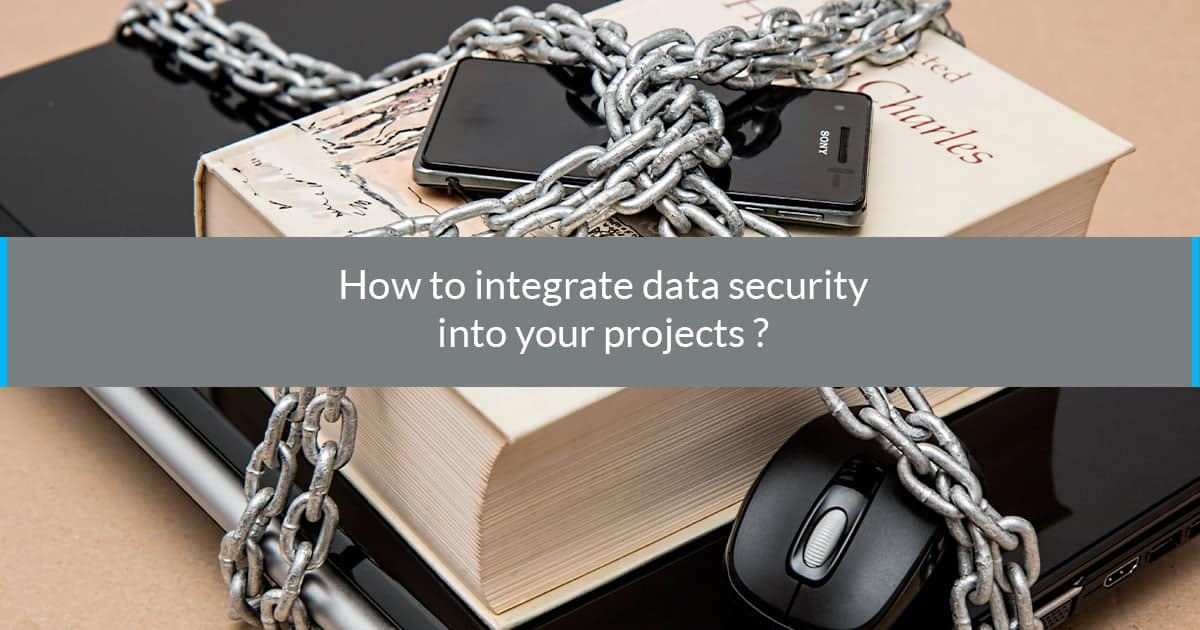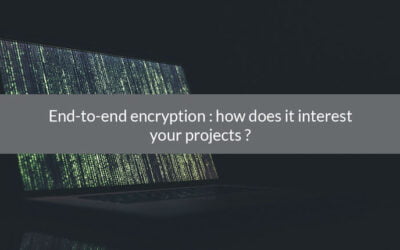In today’s society, cybercrime is a serious concern for all companies, no matter their size or their industry sector. Data destruction, theft, sabotage, economical or industrial espionage; cyberattacks often have disastrous consequences for companies. They halt production, result in data loss, impact your reputation and hinder development.
Cybercriminals are devising increasingly clever, cunning and malicious ways to infiltrate systems with malware or ransomware and steal confidential data.
Unfortunately, in project management, data security is not always a priority. To fight against this plague of cybercrime, project leaders should remain alert, anticipate data threats as well as standard work-related risks and integrate data security at the heart of the projects. Dealing with the aftermath of a data breach will cost more in the long run than investing in data security. As the saying goes: ‘Prevention is better than a cure’.
4 tips to integrate data security into your projects:
1. Create data security protocols
Data risk management has become essential in today’s society. This allows the identification of different cybersecurity threats, as well as the vulnerabilities of the project and the risks that are involved. You are able to anticipate risks and in the event of a breach, to handle them efficiently.
At the start of every project, the project leader and the team should meet to brainstorm the potential risks.
Do not forget to consult an IT expert in order to better understand your software and its weaknesses.
The different stages of implementing a risk management strategy (data risk management and traditional risk management):
- Identify all the potential dangers.
- Grade the risks according to their importance and their severity.
- Evaluate the probability the risks will occur.
- Determine their impact if they were to happen (financial, legal, company reputation, decrease in productivity, data confidentiality, etc).
- For all the risks identified, find a suitable solution to prevent them and establish an action plan to treat them and limit their effects.
- Estimate the necessary budget for each of the actions.
- Define the indicators to follow and control the evolution of the risks as well as the actions put in place to limit the risks.
2. Establish a list of good practices
To encourage your collaborators to adopt good behaviour, devise a cybersecurity protocol and a list of good practices to follow. Also check that your service providers and suppliers follow the same practices.
Examples of simple practices to put in place:
- Create strong passwords. Never use the same passwords multiple times and change it regularly (ideally every three months).
- Keep your username and password private.
- Regularly update your software as the updates correct bugs and faults which could be used by cybercriminals to access your system.
- Do not open emails from unknown senders and never click on an attachment or a link sent by an unknown sender.
- Secure your portable devices (smartphones, tablet, laptops).
Regular monitoring of your computer system should also be part of your good practices. This is the best way to detect anomalies quickly and therefore react rapidly in the correct way.
Lastly, remind yourself to update your security protocols to reflect new types of cyberattacks.
3. Ensure compliance with good practices
Congratulations, you have now established your cybersecurity protocols and a list of good practices to follow. However, you need to make sure your employees are aware of their existence and can implement them.
To do so, inform your collaborators of the dangers of cybercrime, the different forms of cyberattacks and which behaviour to avoid and which to adopt to avoid issues.
Conduct regular training sessions for all staff to introduce your protocols and your good IT practices. At least once a year hold a refresher session for your employees and don’t forget to train each new employee. Finally, hold regular audits to verify which practices are respected as 90% of all data breaches result from human error (Techradar).
4. Use secure software
Carefully choose the tools, platforms and software that you use. Opt for a secured software that prioritises the protection of your data.
Place your trust in Wimi Armoured, a secured project management software which guarantees the security, the confidentiality and the sovereignty of your data, notably due to end-to-end encryption of your data on French soil. This is on top of offering the essential features for efficient project management.
Conclusion
The security of your data depends on everyone, not just your technical team. The impact of a cyberattack may have dire consequences on the progress of your projects as well as the future of your company.
Data security should be a part of your everyday life and good practices can become habits. Finally, check that you are covered by your insurance in case problems related to data security arise.










